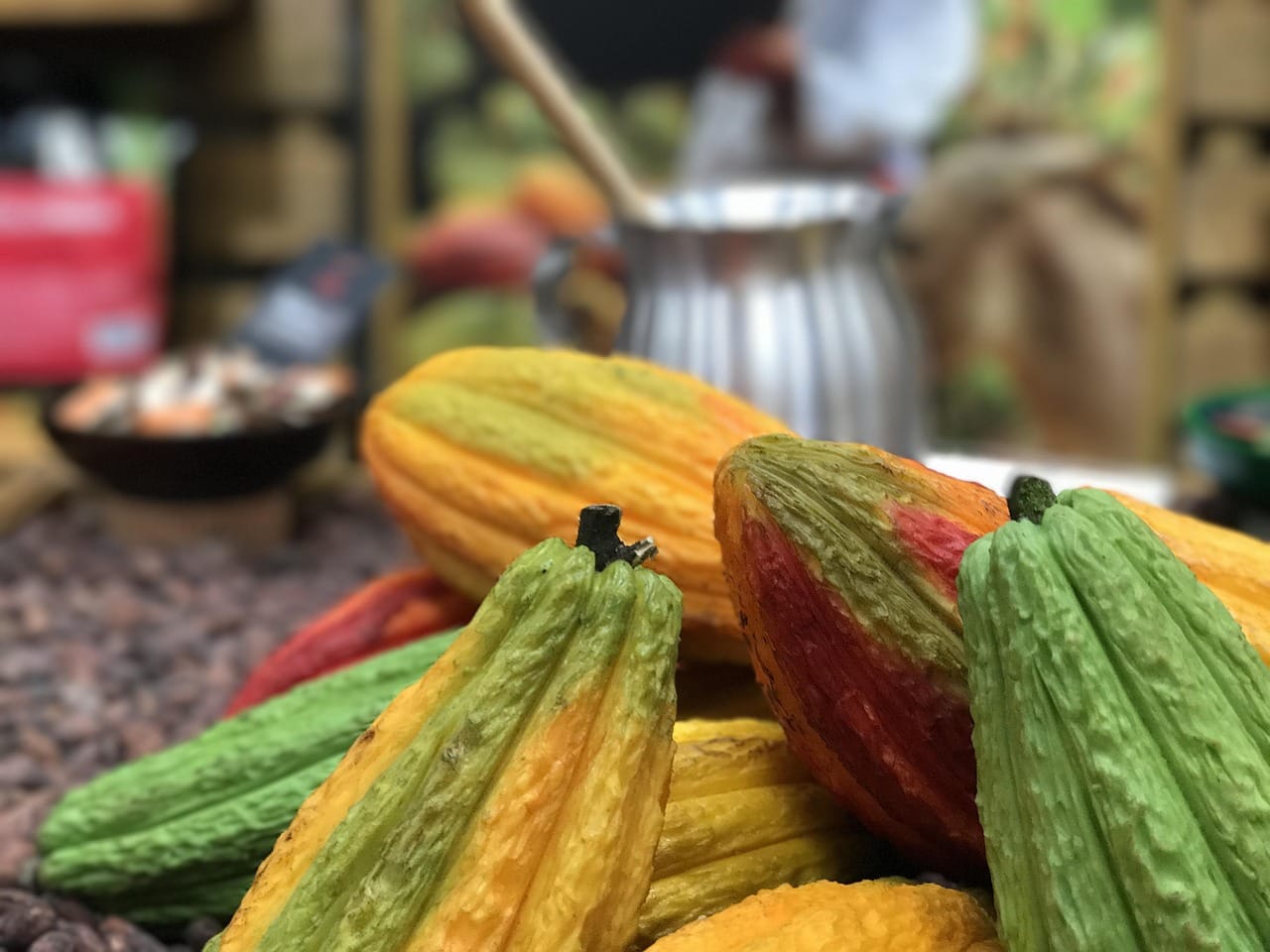Cacao an Earth Medicine to Open the Heart
Cacao is a very special Earth Medicine that is known from brining people together and open the heart due to its chemical properties:
Theobromine: a mild stimulant, that increases the blood flow and a subtle lift in energy without the jitteriness often associated with caffeine.
Phenylethylamine (PEA): A natural compound that can elevate mood and focus, often released when we feel love and connection.
Flavonoids (e.g., epicatechin): These are powerful antioxidants with potential cardiovascular benefits, contributing to a healthy heart.
Anandamide: Known as the “bliss molecule,” it’s a neurotransmitter that promotes feelings of happiness and well-being. Cacao contains compounds that may help prolong the effects of anandamide in the body.
Magnesium: An essential mineral involved in numerous bodily functions, including muscle relaxation and nerve function.
Comming from la Sierrra Nevada, heart of Pachamama it has a powerfull essence to connect with our hearts beyond its chemical properties.
Following are key factors of a feasibility study for cacao production in La Sierra Nevada of Colombia.
Feasibility Study
Environmental Suitability
- Climate: Cacao thrives in hot, humid tropical climates with consistent rainfall. The Sierra Nevada’s varying altitudes create diverse microclimates. The study must identify areas within the Sierra Nevada that offer the ideal temperature range (22-30°C) and rainfall (1,500-2,500 mm annually) required for successful cacao cultivation. Water sufficiency analysis for cacao production in the region indicates that rainfall alone may not be sufficient in some areas, highlighting the need for water management strategies.
- Soil: Well-drained, fertile soils rich in organic matter are essential for cacao. The feasibility study should include soil analysis across potential cultivation zones in the Sierra Nevada to determine suitability and identify any necessary soil amendments.
- Altitude: While modified cacao varieties can grow at higher altitudes, the best quality cacao typically comes from elevations between 0 and 800 meters. The study should map suitable altitude ranges within the Sierra Nevada.
- Biodiversity and Shade: Cacao often benefits from shade provided by other trees in agroforestry systems, which also contribute to biodiversity. The study should assess the potential for integrating cacao cultivation with existing vegetation or establishing suitable shade trees.
Cacao Varieties and Quality
- Fine Flavor Cacao: Colombia is known for producing “fine flavor” cacao, primarily of the Criollo and Trinitario varieties. The Sierra Nevada region has native Criollo-type cacaos. The study should identify the prevalent cacao varieties in the region and their quality characteristics.
- Disease Resistance: Some cacao varieties, like CCN-51, are disease-resistant but may have different flavor profiles. The study should consider the susceptibility of local varieties to diseases and pests and explore potential mitigation strategies or the introduction of resistant varieties if appropriate, while also considering the impact on flavor.
Agronomic Practices
- Current Farming Practices: Understanding existing agricultural practices in the Sierra Nevada is crucial. The study should assess current cacao cultivation methods, if any, and identify areas for improvement in terms of yield and quality.
- Good Agricultural Practices: Implementing best practices in planting, pruning, pest and disease management, and harvesting will be vital for a successful cacao venture. The feasibility study should outline a plan for training and technical assistance for farmers.
- Agroforestry Systems: Promoting cacao cultivation within agroforestry systems can enhance sustainability and provide additional income sources. The study should explore suitable companion crops and the design of such systems.
Post-Harvest Management
- Fermentation and Drying: Proper post-harvest processing significantly impacts cacao quality and flavor. The study needs to assess current practices or plan for the establishment of appropriate fermentation and drying facilities.
- Quality Control: Implementing quality control measures at each stage of the value chain will be essential to ensure a premium product.
Market and Economic Viability
- Local and International Markets: The study should analyze the demand for cacao, both domestically and internationally, particularly for fine flavor varieties. Colombia exports cacao to numerous countries, with a significant portion classified as fine or flavor cocoa.
- Pricing: Understanding the price dynamics for different cacao qualities and the potential for premium pricing for high-quality cacao from the Sierra Nevada is crucial. Producer prices in Colombia have been noted to be higher than in many other cacao-producing countries.
- Production Costs: A detailed breakdown of production costs, including land preparation, planting material, labor, inputs, and post-harvest processing, is necessary to determine economic feasibility. The cost of establishing one hectare of cacao under an agroforestry system in Colombia has been estimated.
- Access to Finance: The study should consider the availability of financing options for potential cacao producers.
Social and Community Factors
- Land Tenure: Understanding land ownership and tenure in the Sierra Nevada is essential for establishing long-term cacao production.
- Community Engagement: Engaging local communities, including indigenous populations, is crucial for the success and sustainability of any agricultural project in the region. Projects that work with indigenous communities in the Sierra Nevada have shown positive results.
- Alternative to Illicit Crops: Cacao cultivation can offer a sustainable economic alternative to illicit crops in conflict-affected areas, contributing to peace and reconciliation.
- Labor Availability and Training: Assessing the availability of labor and the need for training in cacao cultivation and processing will be important.
Infrastructure and Logistics
- Roads and Transportation: Access to markets is critical. The study should evaluate the existing transportation infrastructure and identify any potential challenges in moving cacao from production areas to processing facilities and markets.
- Processing Facilities: The need for local or regional processing facilities for fermentation, drying, and potentially even chocolate production should be assessed.
Sustainability and Environmental Impact
- Deforestation: Ensuring that cacao cultivation does not contribute to deforestation is crucial, especially in a biodiverse region like the Sierra Nevada. Agroforestry systems can help mitigate this risk.
- Environmental Regulations: Compliance with local and national environmental regulations will be necessary.


Leave a Reply
You must be logged in to post a comment.